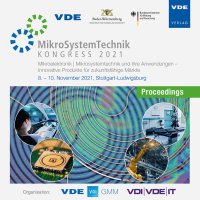Development of a modular microfluidic bioreactor to further research the inter-cellular communication of plant cells and pathogens
Konferenz: MikroSystemTechnik Kongress 2021 - Kongress
08.11.2021 - 10.11.2021 in Stuttgart-Ludwigsburg, Deutschland
Tagungsband: MikroSystemTechnik Kongress 2021
Seiten: 4Sprache: EnglischTyp: PDF
Autoren:
Schmidt-Speicher, Leona M.; Supp, Laura; Ahrens, Ralf; Guber, Andreas E. (Karlsruher Institut für Technologie (KIT) – Institut für Mikrostrukturtechnik (IMT), Eggenstein-Leopoldshafen, Germany)
Metzger, Christian; Nick, Peter (KIT – Botanisches Institut (BOT), Karlsruhe, Germany)
Inhalt:
Research on the intercellular communication between plants and fungi could improve sustainable plant protection against fungal attacks. The microfluidic bioreactor (MBR) was developed to dissect the communicational path between plant and aggressor. However, to cultivate fungi the membrane separating the cultivation and the supply chamber needed to be changed for a membrane with smaller pore diameter so that the fungi hyphae cannot penetrate it. Furthermore, fungi are a very sensitive to nutritional imbalance. Therefore, it is important to know the conditions of nutritional and signalling compound distribution throughout the cultivation chamber. Here we present a simulative analysis of the distribution of nutritional compounds through the chambers-separating membrane as well as within the chamber itself using COMSOL Multiphysics(r). In addition, we introduce the difficulties in ultrasonically welding membranes with smaller pore diameter that only come in thinner nominal thickness into the MBR and present a parameter for accomplishing it. While the new parameter set and membrane now allow for the cultivation of fungi, the results of the COMSOL Multiphysics(r) simulation provide a solid foundation for further research of compound distribution throughout the MBR and which changes might be necessary to improve this distribution.


